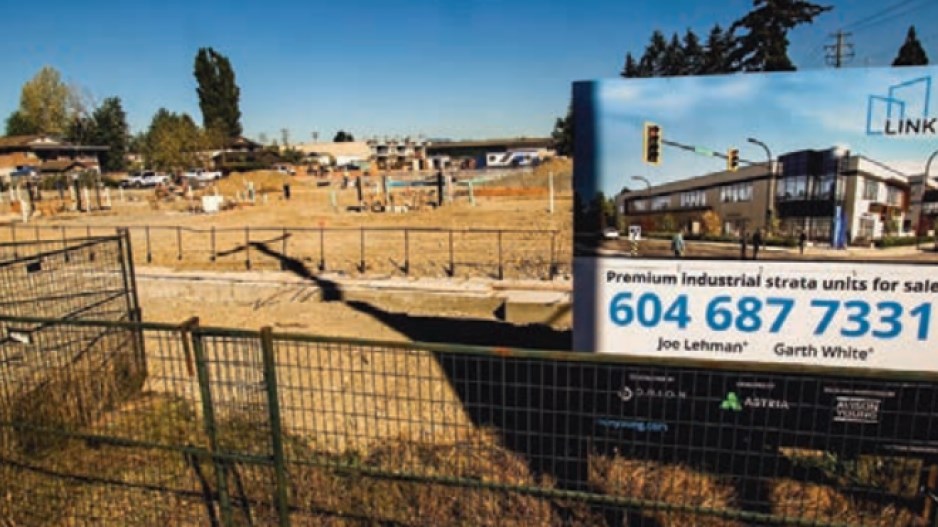Supply-chain bottlenecks and inflationary pressures squeezing the overall economy are also complicating the already challenging Lower Mainland industrial property sector, one industry official says.
Josh Gaglardi, principal of Langley-based Orion Construction, specializes in innovative light industrial and commercial projects throughout Metro Vancouver. He said that, while the acute shortage of industrial space continues to be a major challenge for the local economy, the issue has been further complicated by construction and planning costs, which have risen between 25 and 30 per cent in the last 14 to 18 months for companies like Orion.
According to a spring 2022 Avison Young overview, the overall industrial vacancy rate in the year’s first quarter was 0.5 per cent, and only Surrey – at 1.2 per cent – reported a rate above one per cent among local municipalities.
The Avison Young analysis did say that it anticipates the market to cool this year, partially due to the Bank of Canada’s interest rate hikes this year.
The analysis added that land-use changes in areas like Surrey’s South Campbell Heights “will allow for more industrial development planning and shovels in the ground over the next year or two, lead to more deliveries in the mid-term and ultimately help stabilize rental rates and sale prices.”
On the ground, however, the inflationary spike, higher gas prices and supply chain complications have created new costs for developers and construction contractors, Gaglardi said. So, while demand for industrial space has meant that no clients have cancelled industrial projects, builders and developers have had to pass on the higher costs to buyers.
Sales and lease requirement rates have consequently been raised so that contractors and developers can maintain operating profit margins. That, again, adds to the cost pressures facing businesses looking for what little industrial space there is in Metro Vancouver.
“You’ve seen throughout the pandemic that the demand [for industrial land] is increasing and the vacancy rate continues to decrease,” Gaglardi said. “So, it’s really a perfect storm in our local market, with all these factors now forming a new upward pressure effect on the overall cost of industrial projects.”
But industry and government initiatives can help ease the market’s cost pressures.
Gaglardi noted that Orion’s Link 200 project in Langley – a 61,944-square-foot multi-storey design that mixes office space into industrial and warehouse zones – is an example of the creativity and flexibility needed to continue creating industrial space in a challenging cost environment.
The Link 200 site is former residential property that has been rezoned to industrial; designers added office use and additional density to the space to address the issue of rising costs.
“We also have some third-storey offices on that project to help rationalize the cost of construction to maintain a viable project for our client,” Gaglardi said. “The goal is to try to create employment lands in areas where future transit like SkyTrain may be coming in close proximity, and – as a function of our constraints – we had to create a fairly intense multi-storey … in order to make it viable.”
But Gaglardi added that the private sector alone can’t drive the creativity and flexibility needed to address Metro Vancouver’s dearth of industrial land.
He said Orion’s experience working with the City of Langley – where officials prioritized creating employment lands because it supports jobs and the local economy – provides a potential road map for other governments to follow to free up more industrial space throughout the Lower Mainland.
Part of that creativity involves taking into account non-traditional industrial uses when it comes to approving development options – something that Langley did in allowing the regulatory process for projects like Link 200 to cut through the red tape.
The key, Gaglardi said, is to focus on the desired result: Generating long-term employment from the space being created.
“You have more opportunities for unlocking lands outside of the core suburban areas like Vancouver, Burnaby and Richmond,” he noted, pointing to Delta and Surrey as two prime examples.
“Campbell Heights is a really good example of that.… Metro Vancouver is working with developers to push higher-intensity development in industrial. So I think that there’s going to be a lot of positive outcomes as a result of the way Fraser Valley cities are thinking – in pushing the envelope on industrial development.” ■




